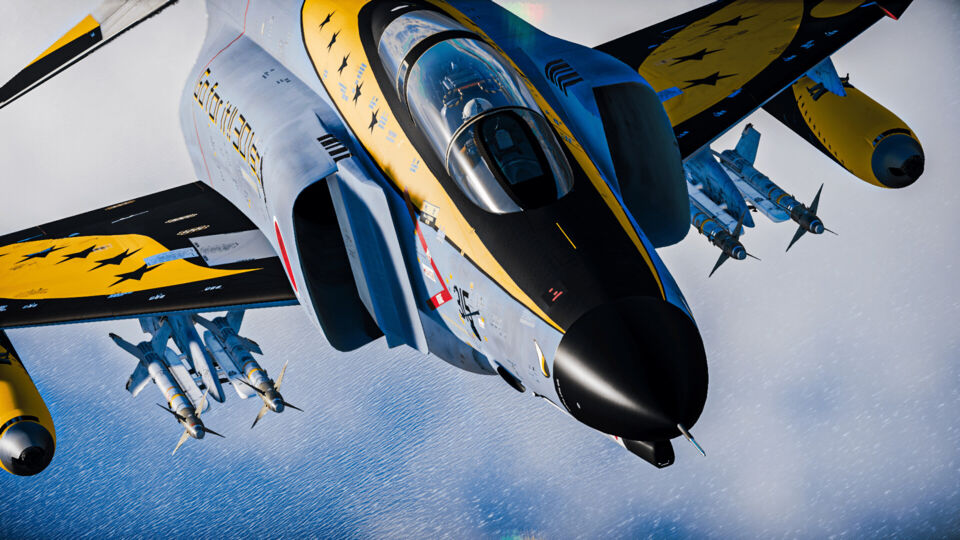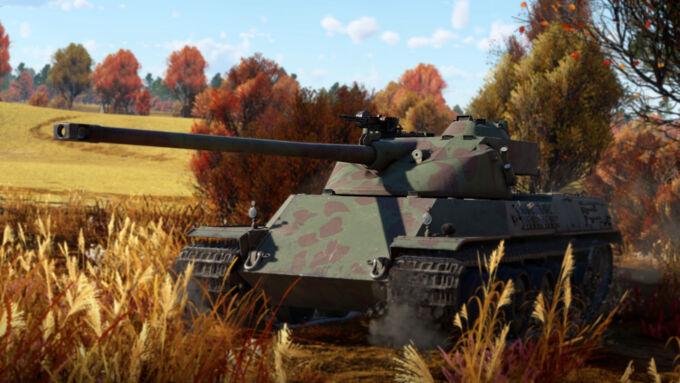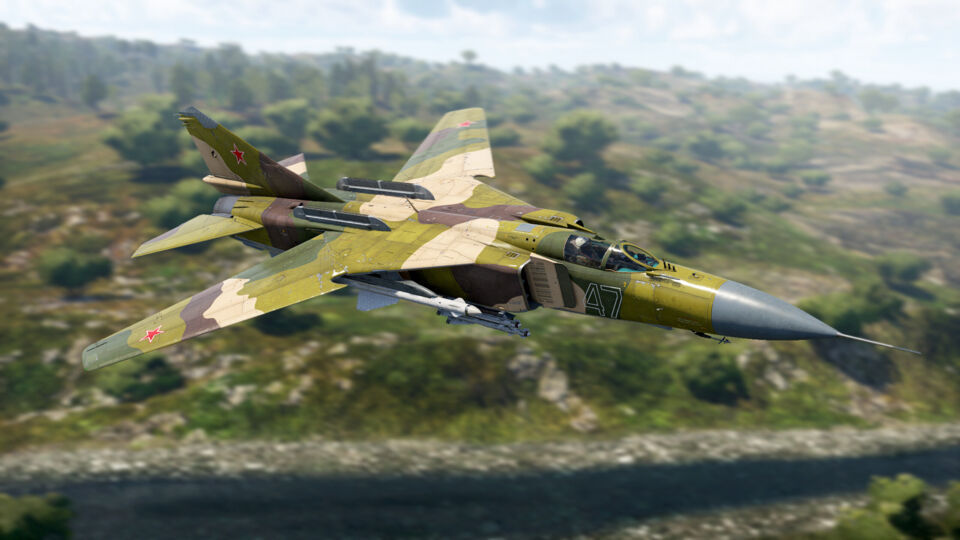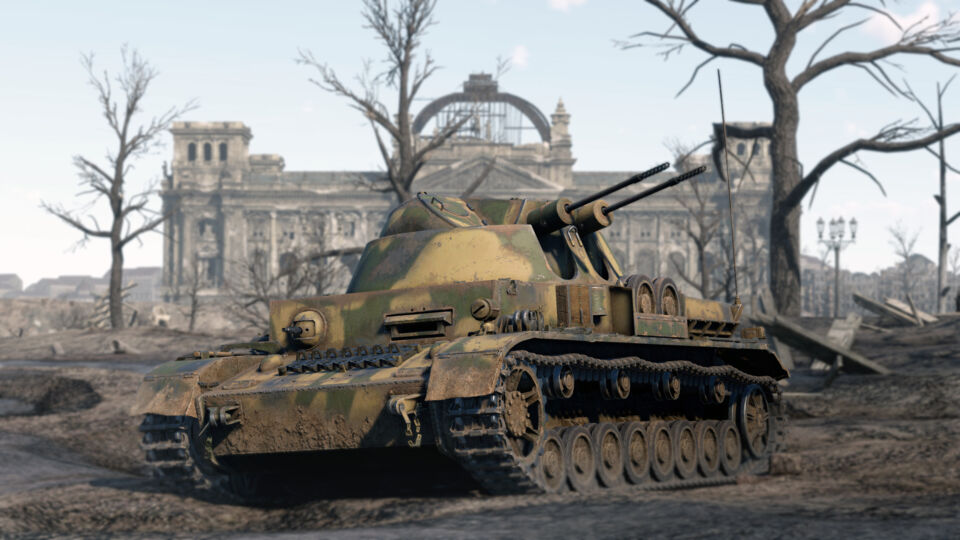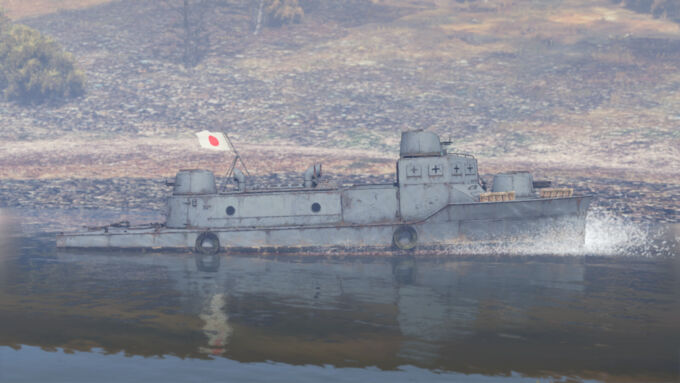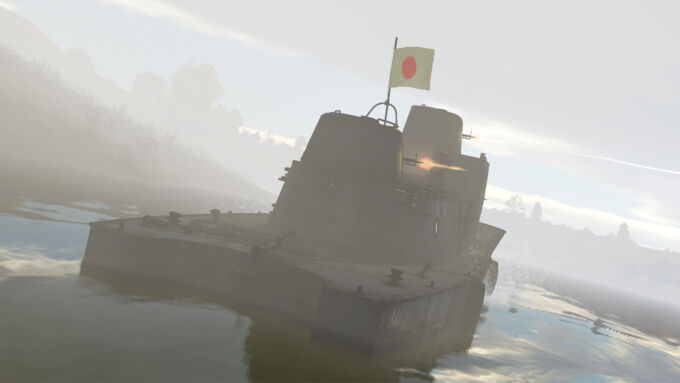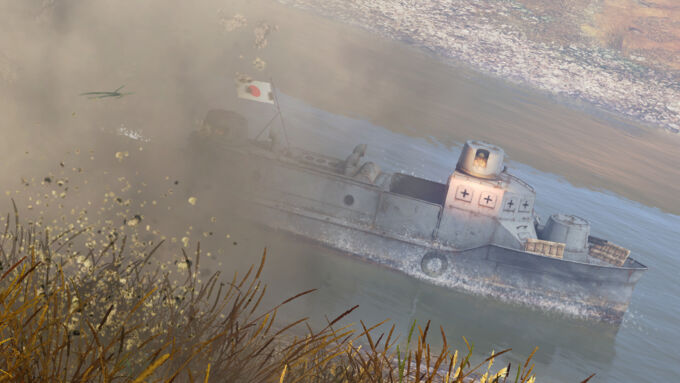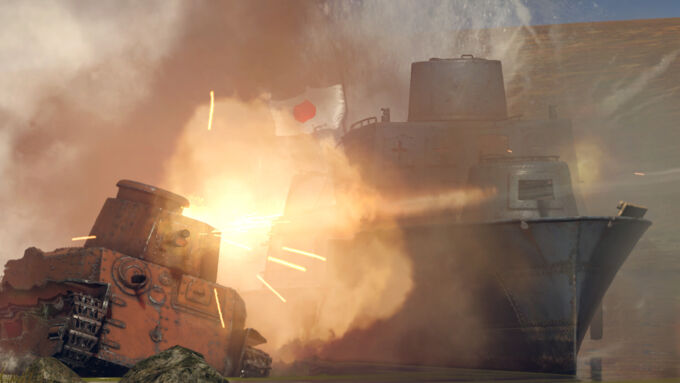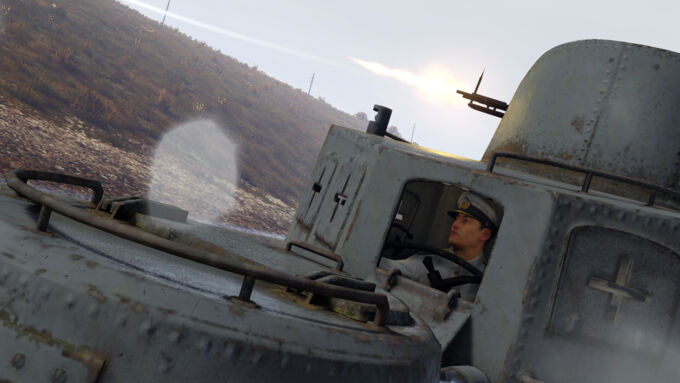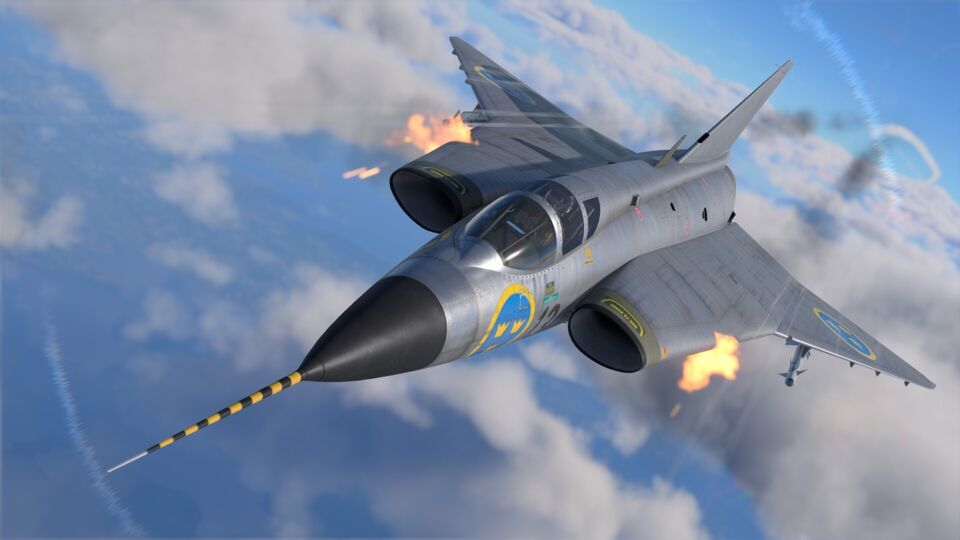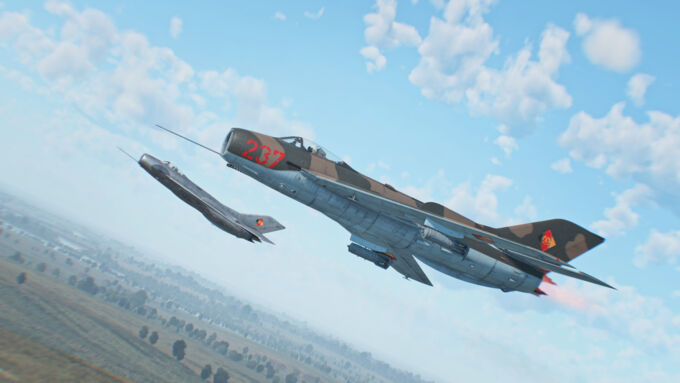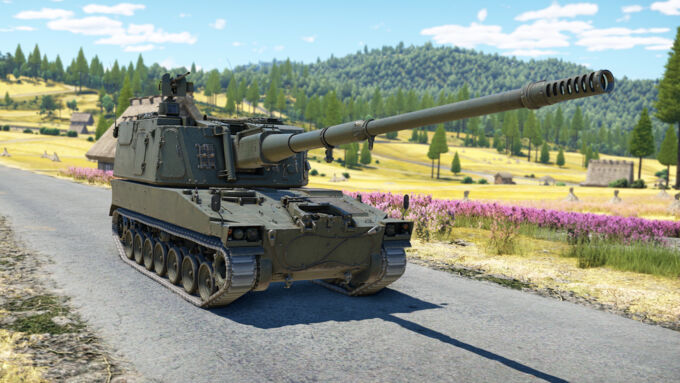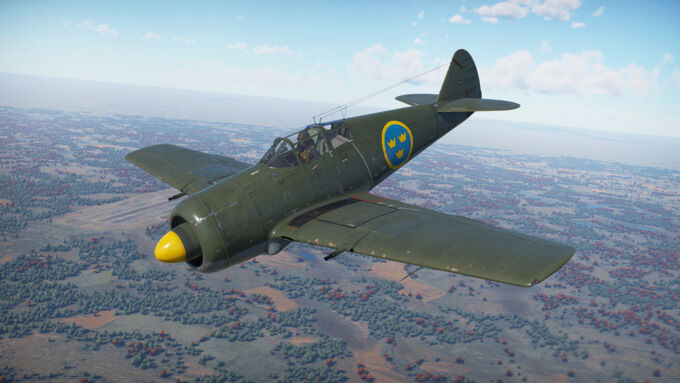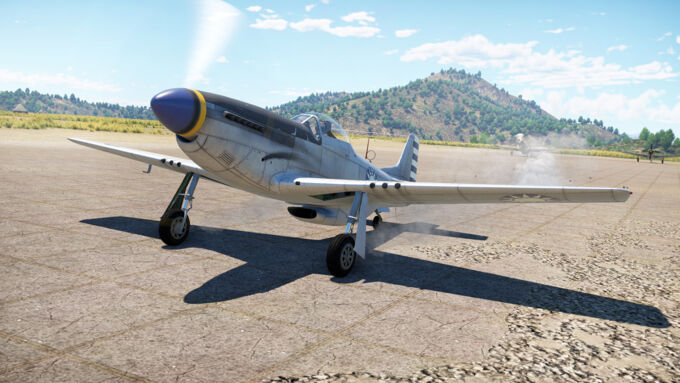#gameplay
The F-4EJ Kai (F-4EJ改) was a vital upgrade for Japan’s aging F-4EJ Phantom IIs, extending their service life and enhancing combat effectiveness through the Aircraft Structural Integrity Program (ASIP). Introduced in the 1980s and first flown in 1984, the upgrade included advanced radar, improved avionics, and modern weapon systems, enabling the aircraft to remain operational until 2021. Sharing its radar and weapon suite with the F-16A, the F-4EJ Kai excels in long-range engagements using AIM-7Fs and dogfights with AIM-9Ls, though it struggles in close combat due to limited manoeuvrability. Pilots can exploit overshooting enemies by slowing down and using airbrakes, then striking with missiles or the gun, leveraging the ballistic computer for precise hits.
Among the many different iterations of the AMX-50 tank in the French line-up is the AMX-50 (TO90/930). The tank itself may not be very impressive on the surface, with subpar firepower and armor protection. However, inside the tank lays lots of potential as a matchmaker tearing apart streams of enemy tanks from the flanks, enabled by its high mobility and auto-loading cannon. Dive into the AMX-50 (TO90/930) for its quirks and tricks to make it dictate the tide of battle.
The MiG-23ML is an improved variant of the standard M version, developed in the mid-1970s. The primary and most impactful difference is the enhanced maneuverability due to the refined airframe (The L in the name stands for ‘’Lyogkiy’’, meaning lightweight). The MiG-23ML also received a more powerful engine, improving its flight characteristics even further. Overall the MiG-23ML is an agile and lethal aircraft, one which allows you to create a versatile loadout of air or ground weaponry to take on and defeat any contemporary enemy in the air or on the ground.
Germany's anti-aircraft solutions take on many forms based on the Panzer IV, with vehicles like Wirbelwind, Ostwind, Ostwind II, and Zerstörer 45 that mount a rapid-firing autocannon. However, all have the same issue of having an exposed turret compartment that allows aircraft to strafe and knock out critical components and people within the turret. Kugelblitz changes that equation by having a fully enclosed turret, allowing the vehicle to spray 30 mm at incoming aircraft confidently. Let's explore the Kugelblitz a bit more to see what makes this vehicle tick!
The Soukou-Tei No.4 (AB-4), the first production model of the Soukou-Tei series, was introduced in 1933 following the success of the AB-1 'Sakigake' and AB-2 'Kachidoki.' Upgrades included dual 7.7 mm machine guns replacing 6.5 mm ones, the 57 mm Type 97 tank gun replacing the 37 mm Type 11 infantry gun, and more efficient welding for lighter yet equally protective armor. A diesel engine further improved mobility, enabling higher speeds. Compared to its predecessor, the AB-4 boasts better performance, firepower, and mobility but still struggles with limitations in open-sea combat. The 7.7 mm machine guns are effective against lightly armored targets like patrol boats and aircraft but lack range, while the 57 mm gun offers strong damage potential hindered by accuracy and velocity issues, making it challenging to engage fast or distant enemies.
The J 35A Draken is a second-generation Swedish jet fighter that was manufactured by SAAB from 1955 until 1974. This legendary aircraft had its maiden flight in 1955 and was designed to replace the aging J 29 Tunnan and J 32 Lansen as an all-weather fighter-interceptor. Further, the Draken was the first West European jet fighter to breach the sound barrier and is well known for its very unique looks and shape. In War Thunder, this unique aircraft is a premium jet fighter that used to be in the Swedish air tree but has since been removed to only appear on special occasions. It was introduced with the update “Direct Hit”.
The East German MiG-19S looks similar to the other MiG-19 counterparts in War Thunder. However, the big difference the MiG-19S has is having three instead of two NR-30 autocannons, allowing the MiG-19S to more than easily shred an enemy aircraft with a single burst. In exchange for this extra gun power, the MiG-19S is unable to carry any air-to-air missiles. With the right tips and tricks, however, you can still maximize the MiG-19S' flight characteristics to get a jump on the opponent and shred them apart with three 30 mm shells at a time.
Players picking up the Type 99 right after the Type 75 SPH will notice a particularly long cannon extending over the hull length. This defining characteristic earns the Type 99 the nickname "Long Nose," and this cannon defines how Type 99 will be used as players must come to terms with the explosive arsenal available with the Type 99 at the expense of armor protection. However, with the proper knowledge of properly employing the Type 99 on the battlefield, such a deficit should not be of high concern.
The shape of the J22 brings to mind the F6F Hellcat in the American Tech Tree, and one may come to think of the shape as a heavier fighter with high speed. However, the J22 delivers both good speed and nimbleness for the pilots who choose to use it in battle. The unassuming J22 brings a lot to the table with its powerful 13.2 mm guns and maneuverability.
The P-51K is the last variant of the P-51 available to the Chinese tech tree. While it may not look spectacularly different from the other P-51s available in the game, it does present flight characteristics similar to the P-51D-30 that players can utilize in their battle against opposing players.
